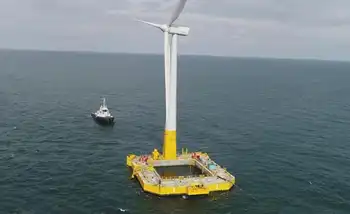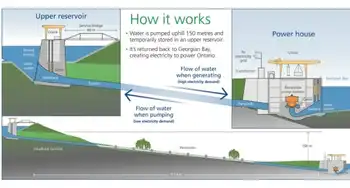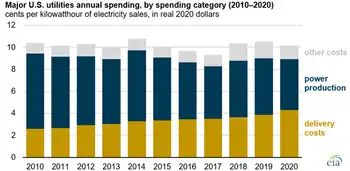Wind turbines encountering NIMBY neighbours
By London Free Press
NFPA 70e Training - Arc Flash
Our customized live online or in‑person group training can be delivered to your staff at your location.

- Live Online
- 6 hours Instructor-led
- Group Training Available
The new guy on the block moved into Marshall's rural neighbourhood outside Goderich, Ont., two years ago, scaring his ponies and purring incessantly through their bedroom window keeping the Marshalls from a good night's sleep.
Marshall suffered a stroke not long after the new neighbour moved in and, on the advice of his neurologists, has sold his home and is moving.
The neighbour is the talk of the town for being "over the top" ostentatious.
It's a wind turbine - the object of bitter name-calling wherever it goes for being an eyesore, noisy and a hazard for migratory bird populations.
"I'm a nervous wreck," Marshall, 65, said.
"We've got to leave.... You can't know how it affects your nerves."
Marshall is quick to clarify he's not against what it stands 80 metres high for - clean energy.
"The problem is they're putting them too close to people."
The wind turbine plaguing Marshall is 548 metres from his home. That's in line with industry guidelines, said Robert Hornung, president of the Canadian Wind Energy Association (CanWEA).
"It's not based on distance but on the sound level," he said. Sound travel can be muffled, for example, by the trees or rolling hills, but will be amplified on flatlands.
Generally, wind turbines are built 300 to 600 metres from a residence.
It's a classic example of the NIMBY mentality, a not-in-my-backyard attitude that mounts forceful campaigns against the wind industry and has led to a handful of project cancellations.
Plans to build four wind projects in the county of Chatham-Kent in southwestern Ontario were stalled last month after a three-hour discussion punctuated by angry residents and concerned biologists.
In 2006, Enbridge cancelled plans to build a wind farm in Saugeen Shores on the coast of Lake Huron after facing fierce public resistance.
It's perhaps one of the reasons Canada falls behind 10 countries that have harnessed the power of the wind.
Denmark, for instance, produces enough wind energy to meet 20% of that country's electricity demands.
But given that Canada boasts the longest coastline in the world, some of the world's largest open prairies, and lakes - all uninterrupted expanses where wind is able to accumulate energy - we also have the potential to meet 20% of our electricity demands or 17 million homes, says CanWEA.
Currently, Canada has 1,856 megawatts of installed wind capacity, which powers the equivalent of 560,000 homes.
The U.S., meanwhile, installed a record 5,244 megawatts last year alone.
Last month, the Global Wind Energy Council announced that more than 20,000 megawatts of wind power was installed last year, led by the U.S., China and Spain, representing a 31% increase from 2006.
"Canada got started later than other countries," Hornung said. "And has been slow to respond to climate change."
The wind industry defends itself against accusations that the turbines create infrasound - noise produced at a level below human hearing - that is harmful to people's health. "There is no peer-reviewed journal study that can prove that," Hornung said.
A wind farm set back 350 metres from a residence produces decibel noise between 35db and 45 db - a quiet bedroom measures at 35 db and a car traveling 64 km/h at 100 metres falls at 55 db.
Meanwhile, the industry also has the backing of the National Audubon Society, a bird conservation group. On balance, properly sited wind farms work to protect birds from the more dangerous threat of global warming, the society said.
"Wind energy brings economic development opportunities into these rural economies," Hornung said.
It's also the ideal tag team partner to hydro-electricity which accounts for 60% of Canada's energy: When it's windy, trade off and close the dam. But it's another thing when residents complain the turbines are an esthetic blight on their community, Hornung said.
"One of the most challenging issues for the industry to deal with is its visual impact because it's such a subjective thing," he said. "The only thing that can be done is for the wind developer to engage the community."
TOP 15 COUNTRIES WITH INSTALLED WIND ENERGY
(At end of 2007, in megawatts)
1. Germany - 22,247MW
2. USA - 16,819 MW
3. Spain - 15,145 MW
4. India - 8,000 MW
5. China - 6,050 MW
6. Denmark - 3,125 MW
7. Italy - 2,726 MW
8. France - 2,454 MW
9. UK - 2,389 MW
10. Portugal - 2,150 MW
11. Canada - 1.846 MW
12. Netherlands - 1,746 MW
13. Japan - 1,538 MW
14. Austria -- 982 MW
15. Greece -- 871 MW











